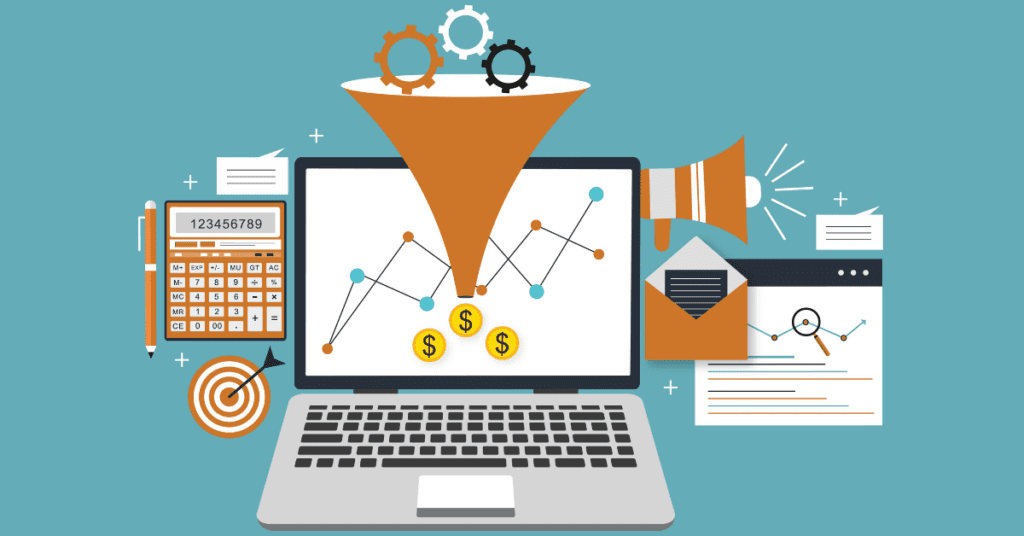From Clicks to Conversions: Analyzing Key Metrics in Funnel Marketing

In the dynamic landscape of digital marketing, understanding how to move potential customers through the marketing funnel is crucial for success. The journey from clicks to conversions involves a careful analysis of key metrics that provide insights into user behavior and campaign performance. For marketers in Hyderabad looking to enhance their skills and drive better results, a digital marketing course in Hyderabad can offer invaluable training on leveraging these metrics effectively.
Understanding the Marketing Funnel
The marketing funnel represents the stages a potential customer goes through before making a purchase. Typically, these stages are Awareness, Consideration, Conversion, and Loyalty. By focusing on the metrics associated with each stage, marketers can identify areas for improvement and optimize their strategies to increase conversions.
Key Metrics to Analyze in Funnel Marketing
1. Traffic Metrics (Awareness Stage)
At the top of the funnel, your primary goal is to drive traffic and create awareness. Key metrics to monitor include:
- Website Visits: The total number of visitors to your site helps you gauge overall reach.
- Traffic Sources: Analyze where your traffic is coming from—organic search, paid ads, social media, etc. This will inform your channel strategies.
- Bounce Rate: The percentage of visitors who leave after viewing only one page indicates how engaging your content is.
Strategy: Utilize tools like Google Analytics to track these metrics and identify which channels are driving the most traffic. This insight can help you allocate resources effectively to optimize your awareness campaigns.
2. Engagement Metrics (Consideration Stage)
Once users are aware of your brand, the focus shifts to engaging them and nurturing their interest. Key engagement metrics include:
- Pages per Session: This measures how many pages a user views in one session. Higher numbers indicate that visitors find your content valuable.
- Average Session Duration: This metric shows how long users stay on your site. Longer durations often correlate with increased interest.
- Social Shares and Comments: Engagement on social media platforms can provide insights into how well your content resonates with your audience.
Strategy: Monitor these metrics to refine your content strategy. If users are not engaging, consider creating more interactive content like videos, polls, or quizzes to capture attention and encourage exploration.
3. Conversion Metrics (Conversion Stage)
This is the stage where clicks turn into actual conversions. Key metrics to evaluate include:
- Conversion Rate: This is the percentage of visitors who complete a desired action (e.g., signing up for a newsletter or making a purchase). A low conversion rate may indicate issues with your messaging or user experience.
- Cart Abandonment Rate: For e-commerce sites, this metric shows the percentage of users who add items to their cart but do not complete the purchase. Analyzing this can reveal pain points in the checkout process.
- Lead Generation Metrics: If your goal is to generate leads, track the number of leads captured through forms, downloads, or subscriptions.
Strategy: Use A/B testing to experiment with different landing pages, CTAs, and offers to optimize your conversion rate. Understanding user behavior through tools like heat maps can also help identify friction points in the conversion process.
4. Retention Metrics (Loyalty Stage)
The final stage focuses on retaining customers and turning them into brand advocates. Key metrics to consider include:
- Customer Lifetime Value (CLV): This metric estimates the total revenue a business can expect from a single customer over the duration of their relationship. A higher CLV indicates successful retention efforts.
- Churn Rate: The percentage of customers who stop using your product or service during a given period. Understanding churn can help identify issues that may be causing customer dissatisfaction.
- Repeat Purchase Rate: This measures how many customers make additional purchases. A higher rate indicates strong customer loyalty and satisfaction.
Strategy: Focus on delivering exceptional customer experiences and follow up with post-purchase communications to nurture relationships. Implement loyalty programs to reward repeat customers and encourage referrals.
Conclusion
Analyzing key metrics at each stage of the funnel is essential for converting clicks into meaningful customer actions. By understanding and optimizing these metrics, marketers can make data-driven decisions that enhance their strategies and drive better results.
For marketers in Hyderabad eager to master the art of funnel marketing and improve their analytical skills, enrolling in a digital marketing course in Hyderabad can provide the necessary tools and insights to thrive in this competitive landscape. Embrace the power of data, and transform your marketing efforts from mere clicks into lasting conversions.







